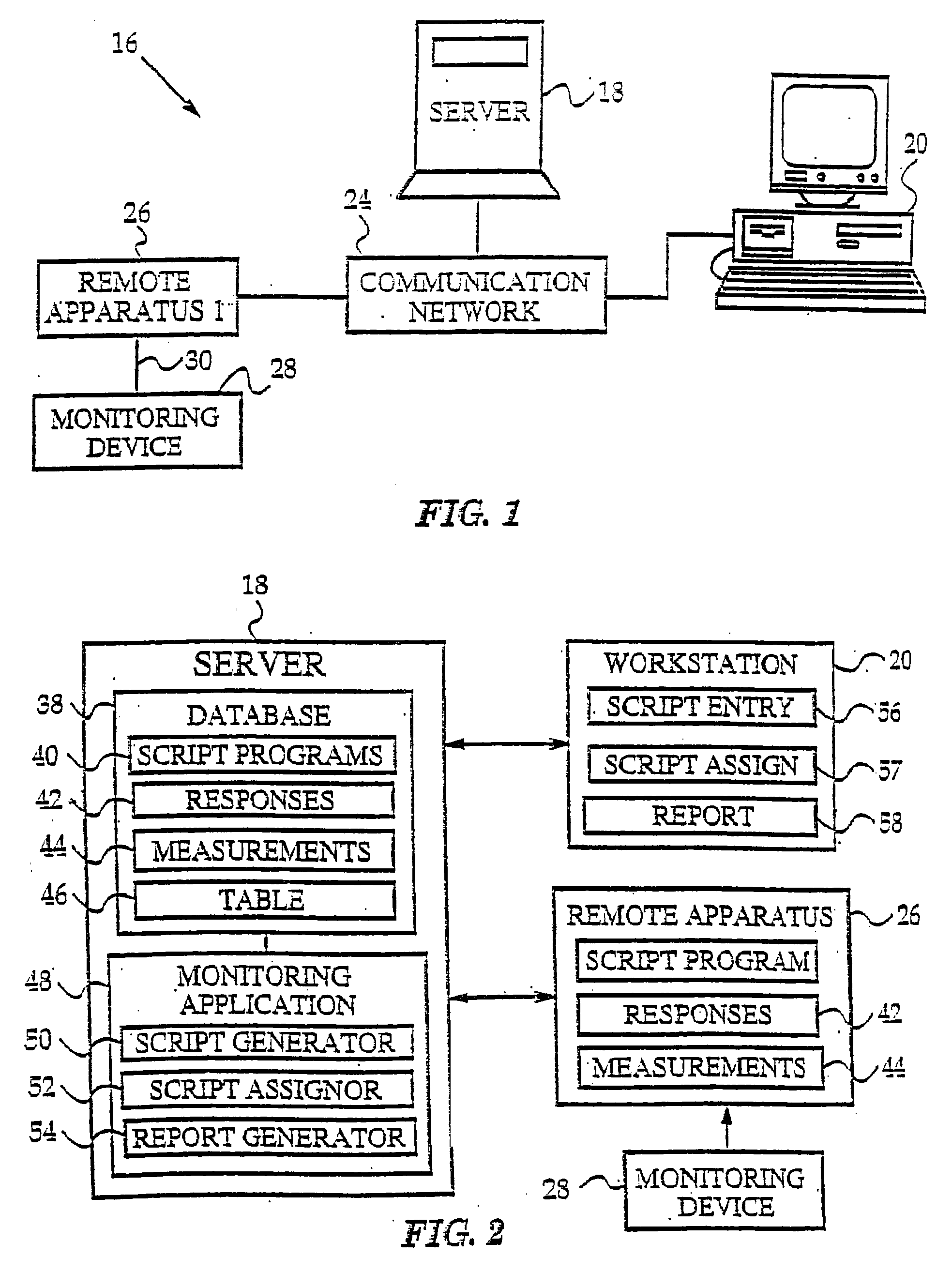Multi-user remote health monitoring system with biometrics support
a health monitoring system and multi-user technology, applied in the direction of person identification, applications, instruments, etc., can solve the problems of patients not having the greatest unmet medical needs, no convenient and cost effective monitoring system, and too expensive computers to give away
- Summary
- Abstract
- Description
- Claims
- Application Information
AI Technical Summary
Benefits of technology
Problems solved by technology
Method used
Image
Examples
Embodiment Construction
Cross Reference to Related Applications
[0001] This application is a Continuation-in-Part of U.S. Serial No. 09 / 665,442 filed September 19, 2000, which is a Continuation-in-Part of U.S. Serial No. 09 / 357,536 filed July 19, 1999, which is a Continuation of U.S. Patent No. 5,940,801 issued on August 17, 1999, which is a Continuation of U.S. Patent No. 5,828,943 issued October 27, 1998, which is a Continuation of U.S. Serial No. 08 / 682,385 filed July 17, 1996, now abandoned, which is a Continuation of U.S. Serial No. 08 / 479,570 filed June 7, 1995, now abandoned, which is a Continuation of U.S. Serial No. 08 / 233,674 filed April 26, 1994, now abandoned.This application is also a Continuation-in-Part of U.S. Serial No. 09 / 665,442 which is a Continuation-in-Part of 09 / 293,363 filed on April 16, 1999, U.S. Serial No. 09 / 203,882 filed on December 1, 1998, U.S. Serial No. 09 / 159,219 filed on September 23, 1998, U.S. Serial No. 09 / 159,058 filed on September 23, 1998, U.S. Serial No. 09 / 203,880 ...
PUM
 Login to View More
Login to View More Abstract
Description
Claims
Application Information
 Login to View More
Login to View More - R&D
- Intellectual Property
- Life Sciences
- Materials
- Tech Scout
- Unparalleled Data Quality
- Higher Quality Content
- 60% Fewer Hallucinations
Browse by: Latest US Patents, China's latest patents, Technical Efficacy Thesaurus, Application Domain, Technology Topic, Popular Technical Reports.
© 2025 PatSnap. All rights reserved.Legal|Privacy policy|Modern Slavery Act Transparency Statement|Sitemap|About US| Contact US: help@patsnap.com



